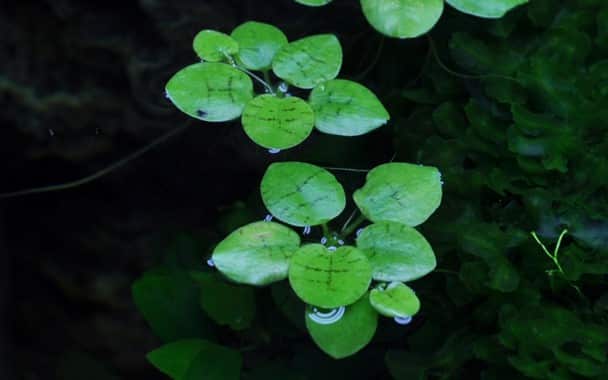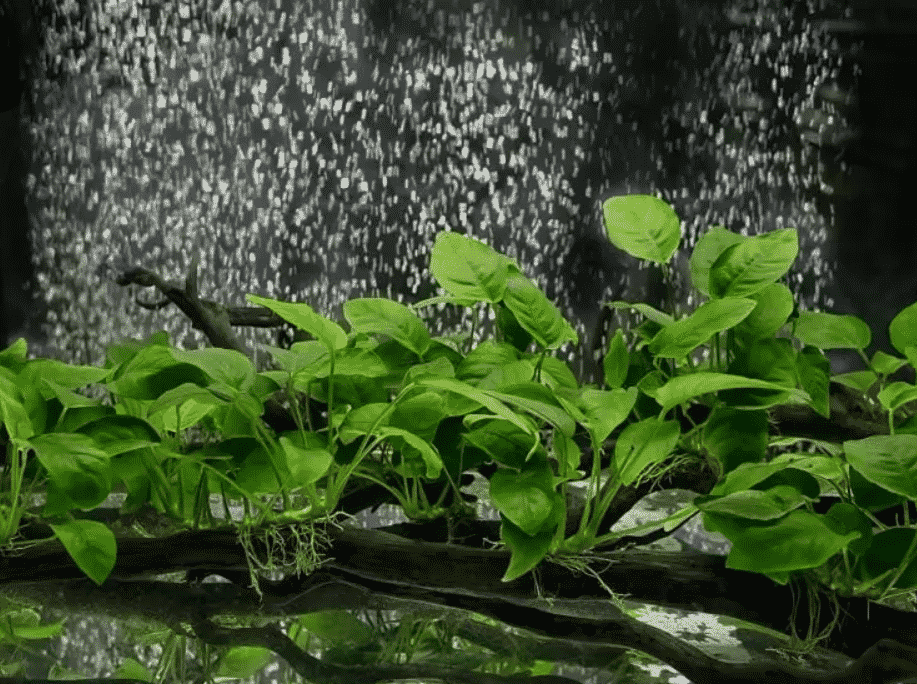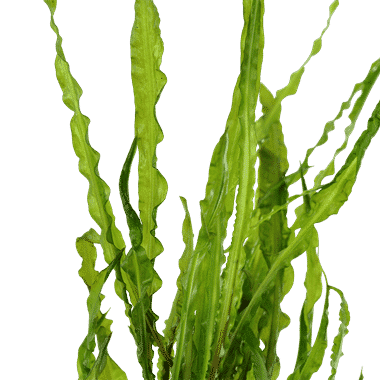Aquatic Plants That Can Live And Thrive Without CO2

What are the aquatic plants that can live without CO2?
- Frogbits
- Anubias Nana
- Rotala Rotundifolia
- Cryptocoryne Crinkles
Starting out with aquascaping, you might be surprised to find out that not all plants are easy to care for. Some need special water conditions to thrive. Fortunately, things can be made easier if you choose to keep aquatic plants that can live without CO2.
Aquatic plants not only look aesthetically pleasing but also provide a wide array of benefits for your tank. They remove harmful nitrates, prevent algae accumulation, produce oxygen, and provide livestock with places to hide.
With so many choices for aqua plants in the Philippines, it can be challenging to tell which ones are not that demanding. This is especially helpful if you don’t have enough time for maintaining your tank or have a low-tech setup. To make things easier for you, we’ve rounded up 4 aquatic plants that can live without CO2. Read on!
Frogbits

We start off the list for non-CO2 requiring plants, the Frogbits. The frogbits are native to Central and South America. Known for having a bright green color, smooth and near-perfect round leaves, Frogbits have no shortage when it comes to aesthetics. Its leaves float on the water surface and it has long leaves, making it an ideal decorative plant.
Frogbits come from the genus Limnobium. In terms of care, this aquatic plant has easy hardiness. It can thrive with a water pH of 6.0 to 7.5 and medium lighting levels.
Keep in mind that Frogbits have a moderate to fast growth rate. Hence, if you don’t want to make it grow up to 20 inches, regular trimming is advised. It propagates through flower pollination and seed production.
Anubias Nana

Anubias Nana is an ideal beginner aquatic plant without CO2 because it tolerates nearly every tank condition. Due to the absence of CO2, it has a slow growth rate. Its origins can be traced back to Cameroon, Africa.
Most aquascapists find the Anubias Nana as one of the most stunning midground plants. It is characterized by semi-round leaves and curved stems. Coming from the family Araceae, it can reach between 5 to 10 cm in height and 10 to 15 cm in width.
If you want to achieve the most beautiful results with the Anubias Nana, plant it on rocks or driftwood instead of being rooted on a substrate.
Rotala Rotundifolia

Rotala Rotundifolia is native to South-East Asian countries. These include Japan, China, Taiwan, Laos, Vietnam, Thailand, and India. In the Rotala Genus, the Rotundifolia is a perennial plant that is relatively easy to care for without CO2.
When emersed, it has round and thicker leaves. On the other hand, submersed Rotala Rotundifolia has densely long and narrow leaves.
Rotala Rotundifolia can produce bright green or red color, depending on your tank’s nitrate levels. To ensure it thrives well water pH levels can be kept at 5.5 to 7.5.
Due to its stem nature, it can grow moderately with 15 to 30 cm which can breach the tank’s water surface. If you want to propagate the Rotala Rotundifolia, the side shoots can be cut in the upper portion of the stem.
Cryptocoryne Crinkles

The Cryptocoryne Crinkles, or Crypt for short, is a popular genus of plants among aquascapists. They are low maintenance and do not require CO2.
Coming originally from Southern Thailand and the family Araceae, it has a distinct leaf formation that can tower as high as 60 cm long.
For all its beauty, it is easy to care for. It can thrive even under low lighting and a pH level of 6.0 to 8.0. Having a medium growth rate, regular pruning will keep it looking its best. To add to that, Cryptocoryne Crinkles can be easily propagated through cuttings as well.
For best results, use these plants as a solitary plant. Nonetheless, it can also be used in groups as an aquarium backdrop. You can also supplement it with a substrate and iron-rich fertilizer.
Key Takeaway
This article rounded out some of the aquatic plants that can live without CO2. Keep in mind that you should never be daunted when taking care of these plants. They are easy to maintain and can grow without much attention. They also offer a myriad of benefits for your aquarium.
At Aquascape PH, our product list has indications for each plant if they need CO2. You can also purchase other aquascaping additions like filters, substrates, fish food, lights, tanks, and more.
If you have concerns, click here or contact us via email at inquire@aquascape.ph! We are ready to cater to your needs from Monday to Friday, from 9 am to 6 pm.
Share on

